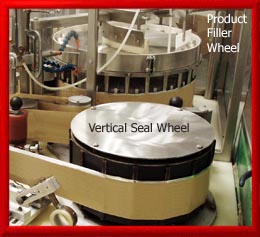

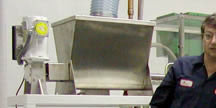 |
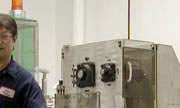 |
 |
|
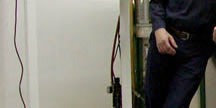 |
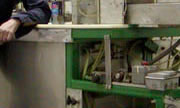 |
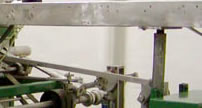 |
|
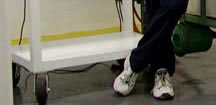 |
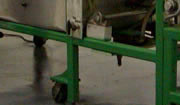 |
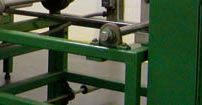 |
These machines go a lot faster than the intermittent type. They can easily hit speeds of 400 plus pouches per minute, but they are more finicky to maintain. You cannot step away from these machines or you could loose hundreds of products per minute due to a sudden misalignment, or if the film goes off track, etc. An operator maintainer has to be nearby all of the time. The machine you see above is called a Cloud packaging machine. The reason it can go so fast is because unlike the intermittent motion machine all of the stationary operations which occur perpendicular to the film movement, such as the side sealing and filling actions, are traveling right along with the film at the same speed.
The vertical seal is performed by a series of vertical heated lands on a rotary drum as the film travels around it. A rotary filler wheel assembly performs the pouch filling function with funnel pockets, and filler spouts, mounted on the perimeter of the filler wheel. As the strip of pouches with 3 pre-sealed sides passes under the perimeter of the filler wheel, air jets blow the pouch pockets open so the they can receive the product falling out of the spouts on the perimeter of the rotating filler wheel and into the pouches below. The horizontal top and bottom seals consist of 2 parallel mounted heat seal bars and they are in constant contact with the continuously moving strip of pouches as they pass through the top and bottom seal zones. Not until the filled and sealed pouches approach the exit of the machine do they get cut into individual packets by a rotary kinfe assembly, whereafter they drop onto a take away belt and head towards an open case or container.
On the machine above I completely rebuilt the entire electric system. This machine even had a huge control cabinet for the photoelectric registration system. I removed this behemoth of a registraion system to create more room for an ingredient feeder and replaced the registration system with a circuit I designed with components so small they fit right into existing control cabinet. Check out the slide show to see how that was done.